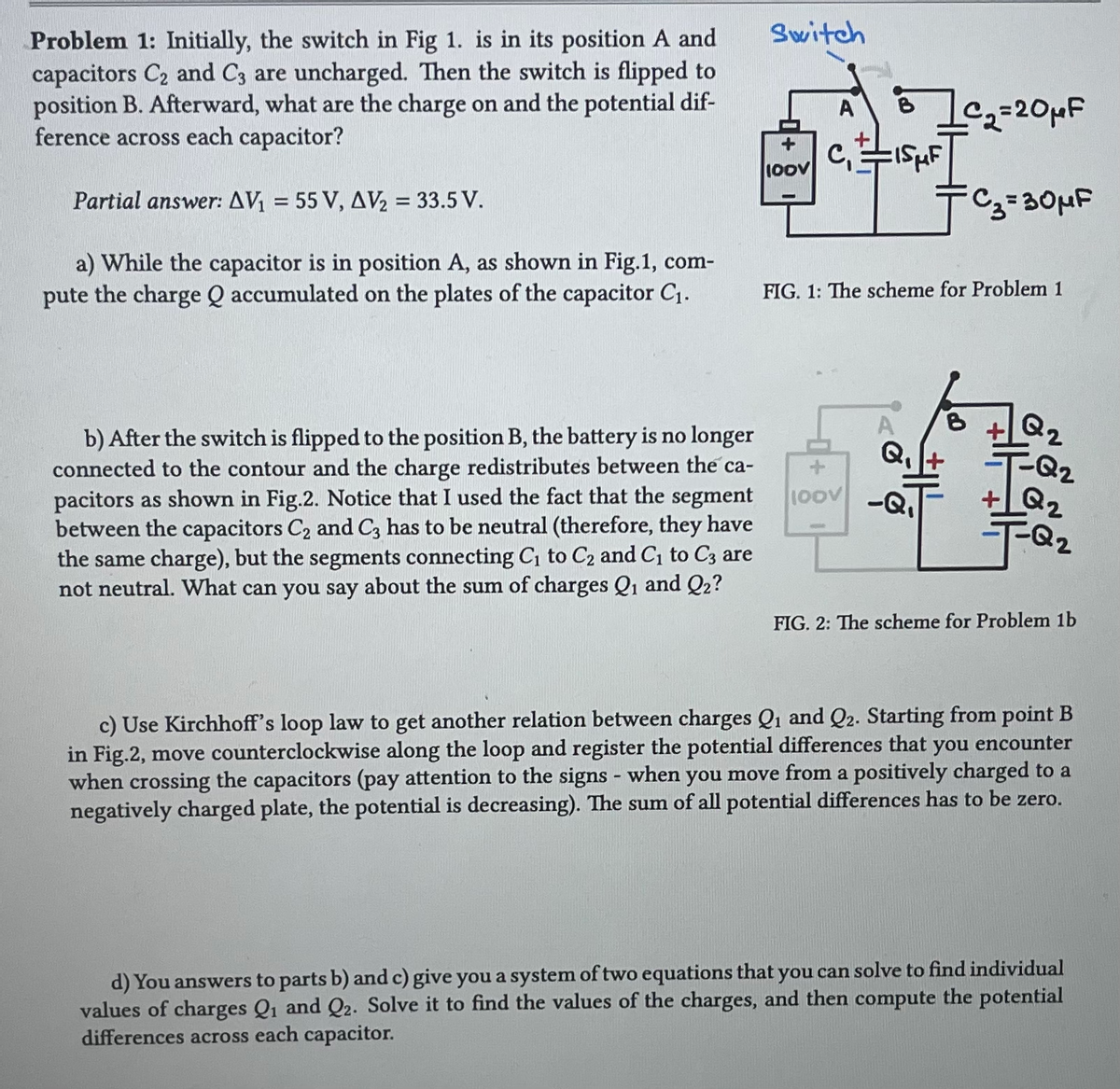Problem 1: Initially, the switch in Fig 1. is in its position A and capacitors C₂ and C3 are uncharged. Then the switch is flipped to position B. Afterward, what are the charge on and the potential dif- ference across each capacitor? Partial answer: AV₁ = 55 V, AV₂ = 33.5 V. a) While the capacitor is in position A, as shown in Fig.1, com- pute the charge Q accumulated on the plates of the capacitor C₁.
Problem 1: Initially, the switch in Fig 1. is in its position A and capacitors C₂ and C3 are uncharged. Then the switch is flipped to position B. Afterward, what are the charge on and the potential dif- ference across each capacitor? Partial answer: AV₁ = 55 V, AV₂ = 33.5 V. a) While the capacitor is in position A, as shown in Fig.1, com- pute the charge Q accumulated on the plates of the capacitor C₁.
Related questions
Question
Hello, I keep getting the wrong answer for each part of this problem, can you help me with PART A,PART B AND Part C and can you label which one is which and go step by step so I can understand what I did wrong. thank you

Transcribed Image Text:Problem 1: Initially, the switch in Fig 1. is in its position A and
capacitors C₂ and C3 are uncharged. Then the switch is flipped to
position B. Afterward, what are the charge on and the potential dif-
ference across each capacitor?
Partial answer: AV₁ = 55 V, AV₂ = 33.5 V.
a) While the capacitor is in position A, as shown in Fig.1, com-
pute the charge Q accumulated on the plates of the capacitor C₁.
b) After the switch is flipped to the position B, the battery is no longer
connected to the contour and the charge redistributes between the ca-
pacitors as shown in Fig.2. Notice that I used the fact that the segment
between the capacitors C₂ and C3 has to be neutral (therefore, they have
the same charge), but the segments connecting C₁ to C₂ and C₁ to C3 are
not neutral. What can you say about the sum of charges Q₁ and Q₂?
Switch
100V
A
C₁
B
100V
LC₁₂2= 20 μF
т Cз=30MF
ISHF
FIG. 1: The scheme for Problem 1
Q₁
-Q₁
Q2
-=-=T-Q₂
Q2
Q2
-T-Q₂
FIG. 2: The scheme for Problem 1b
c) Use Kirchhoff's loop law to get another relation between charges Q₁ and Q2. Starting from point B
in Fig.2, move counterclockwise along the loop and register the potential differences that you encounter
when crossing the capacitors (pay attention to the signs - when you move from a positively charged to a
negatively charged plate, the potential is decreasing). The sum of all potential differences has to be zero.
d) You answers to parts b) and c) give you a system of two equations that you can solve to find individual
values of charges Q₁ and Q2. Solve it to find the values of the charges, and then compute the potential
differences across each capacitor.
Expert Solution
This question has been solved!
Explore an expertly crafted, step-by-step solution for a thorough understanding of key concepts.
This is a popular solution!
Trending now
This is a popular solution!
Step by step
Solved in 4 steps with 5 images
